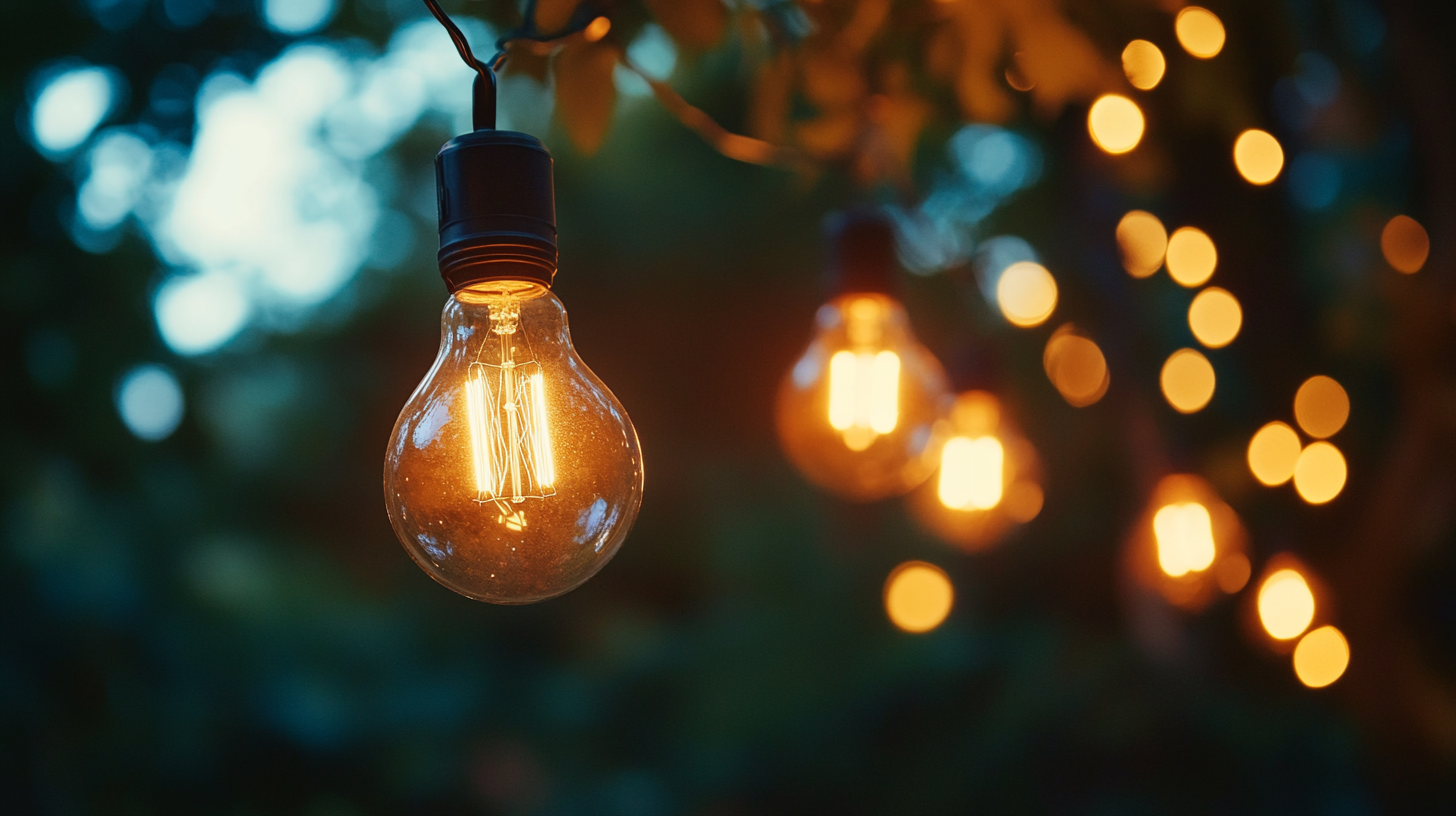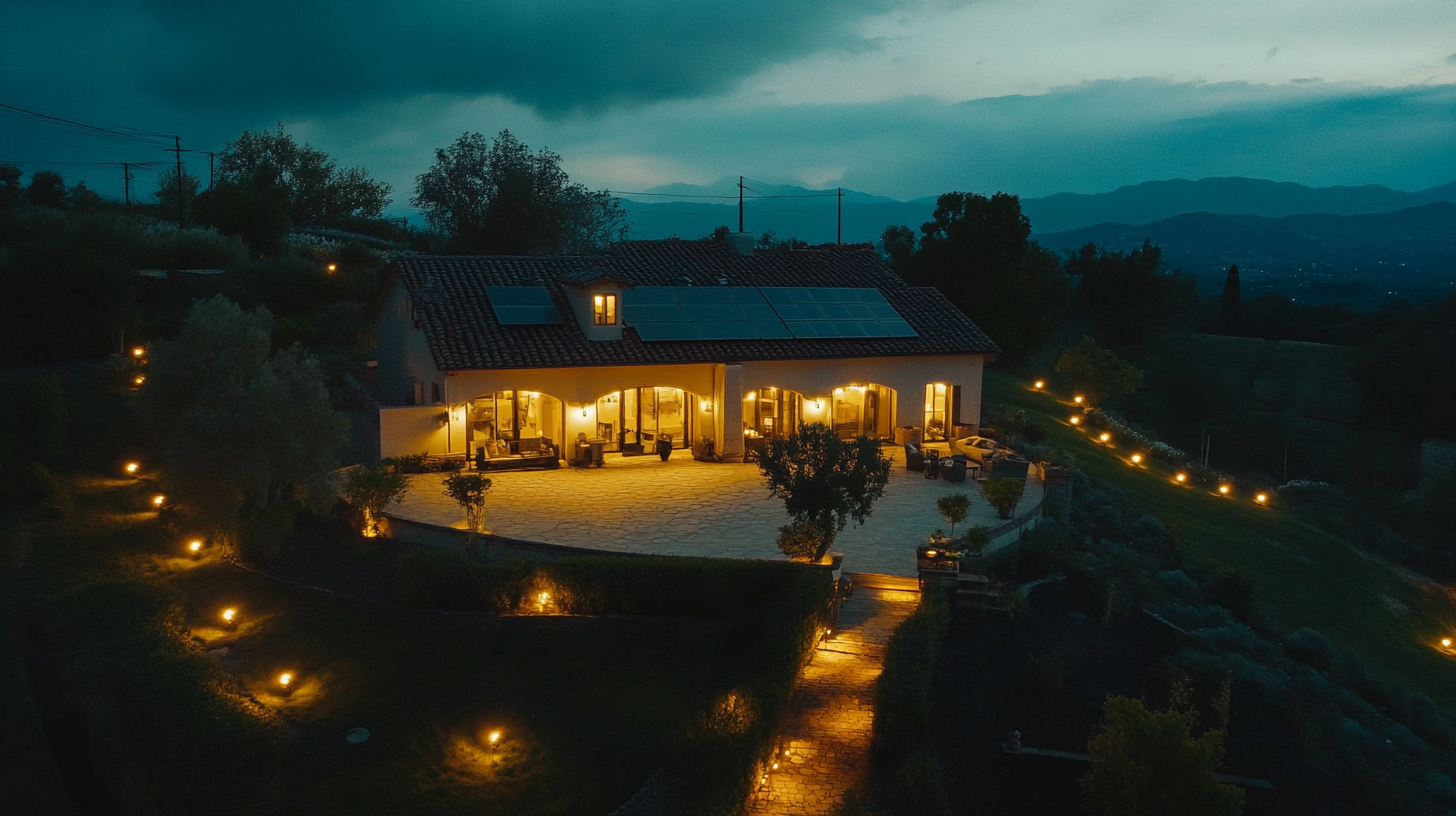Ultimate Guide to Maximizing Efficiency with Solar Powered Outdoor Lights for Your Business
In recent years, the adoption of solar powered outdoor lights has surged, transforming the way businesses illuminate their exteriors. According to the International Energy Agency (IEA), solar energy utilization has increased by approximately 20% annually, highlighting a significant shift towards sustainable energy solutions. Businesses are increasingly recognizing the benefits of solar powered lighting, not only for reducing electricity costs but also for enhancing their environmental responsibility. With improved technology and decreasing costs—down over 80% in the last decade—these solar solutions are now more accessible and efficient than ever.
Moreover, a study by the Solar Energy Industries Association (SEIA) reveals that switching to solar powered outdoor lights can lead to illumination costs being cut by up to 75%. This substantial reduction in energy expenditure can free up resources for other essential business functions and drive overall efficiency. As the demand for sustainable practices continues to rise, leveraging solar powered outdoor lights represents not only an environmentally friendly option but also a strategic business decision that aligns with modern consumer values. This guide aims to provide insights into maximizing the efficiency of solar powered outdoor lights, ensuring your business benefits from both financial savings and enhanced sustainability.

Benefits of Solar Powered Outdoor Lights for Business Operations
In today's fast-paced business environment, maximizing efficiency is essential, and solar powered outdoor lights offer a unique solution that can significantly enhance business operations. One of the primary advantages of using solar lights is their cost-effectiveness. With no reliance on grid electricity, businesses can reduce energy bills and save on installation costs. These lights harness the sun's energy during the day and store it for use at night, ensuring continuous illumination without inflating operational expenses.
Another benefit is the ease of installation and maintenance. Unlike traditional outdoor lighting systems that may require extensive wiring and specialized expertise for installation, solar powered lights are typically simpler to set up. This means businesses can quickly enhance their outdoor spaces without major disruptions to their operations. Additionally, these lights often require very little maintenance once installed, allowing staff to focus on core business activities rather than upkeep.
Moreover, solar lights contribute to sustainability efforts, which is increasingly important to customers and clients. By opting for solar energy solutions, businesses not only reduce their carbon footprint but also demonstrate a commitment to environmentally friendly practices. This can enhance a company's branding and attract eco-conscious consumers, ultimately bolstering business growth. Embracing solar powered outdoor lights is not just an efficiency upgrade; it’s also a forward-thinking choice for businesses looking to thrive in a competitive market.

Choosing the Right Solar Lights for Your Business Needs
Choosing the right solar lights for your business needs is crucial for maximizing both efficiency and cost-effectiveness. First, consider the specific requirements of your outdoor space. Evaluate the areas that need lighting, such as pathways, entrances, or parking lots, and determine the level of brightness required to ensure safety and visibility. Solar lights come in various designs and luminosities, so selecting fixtures that provide adequate illumination without excessive glare is essential.
Another aspect to consider is the durability and weather resistance of the solar lights. Since outdoor installations are subject to varying weather conditions, opt for lights made from robust materials such as aluminum or high-grade plastic that can withstand rain, snow, and UV radiation. Additionally, check the product specifications for the battery life and charging capacity. High-quality solar lights should have efficient solar panels that ensure they charge effectively even on cloudy days, providing reliable lighting throughout the night.
Finally, assess the aesthetics of the solar lights in relation to your business's branding. The design should complement your exterior while aligning with your corporate image. Choosing versatile styles can enhance the overall ambiance of your commercial space, making it more inviting to customers. By combining functionality with visual appeal, you can create a well-lit environment that not only promotes safety but also enhances the attractiveness of your business premises.

Effective Installation Strategies for Maximum Solar Efficiency
When it comes to enhancing your business’s outdoor space, installing solar powered lights can be an eco-friendly and cost-efficient solution. Effective installation strategies are key to maximizing solar efficiency, ensuring your investment pays off over time. Begin by assessing your outdoor area to determine the optimal placement for solar lights. They should be positioned in direct sunlight for most of the day to fully charge, ideally on the south-facing side of your property.
Consider the varying types of solar lights available—pathway lights, floodlights, and spotlights all serve different purposes. Choose lighting fixtures that cater to your specific needs, like increased illumination in high-traffic areas or ambiance in outdoor seating spaces. Additionally, installing a few higher-lumen fixtures can provide better visibility while keeping energy consumption low.
Installation height and angle are also vital—mount solar lights at heights that reduce obstruction from trees, building overhangs, or other structures. Aligning them to capture sunlight effectively will enhance their performance during shorter winter days. Regularly maintaining and cleaning the solar panels is essential; even small debris can hinder absorption and efficiency, so make it a routine part of your business's outdoor maintenance plan. By carefully considering placement, type, and maintenance, you can significantly boost the efficiency of your solar powered outdoor lighting.

Maintenance Tips to Extend the Life of Your Solar Outdoor Lights
Proper maintenance of solar powered outdoor lights is essential to ensure their longevity and optimal performance for your business. Research from the Solar Energy Industries Association indicates that well-maintained solar lights can last between 15 to 25 years, significantly outperforming traditional lighting options which often require more frequent replacements. Regular cleaning and checks can extend this lifespan even further, making it worthwhile for businesses to invest time in maintenance practices.
One of the key maintenance tips is to regularly clean the solar panels. Dust, dirt, and debris can accumulate and block sunlight from being absorbed, which reduces the efficiency of the solar lights. According to a study by the National Renewable Energy Laboratory, dirty solar panels can lose 15-25% of their energy production. Utilizing a soft cloth and mild detergent to clean the panels at least twice a year can result in noticeable improvements in performance.
Another important aspect is to inspect the battery and LED components regularly. Most solar lights use lithium-ion or lead-acid batteries, which benefit from periodic checks to ensure they are functioning properly. The Department of Energy reports that replacing batteries every 2-5 years can prevent diminished light output and prolong the effectiveness of your solar lights. Additionally, ensuring that LEDs are intact and free from obstructions will help maintain adequate illumination, a crucial factor for businesses relying on outdoor lighting for safety and visibility.
Lastly, it’s advisable to schedule seasonal maintenance checks to assess the overall integrity of the fixtures themselves. Look for signs of corrosion, rust, or physical damage that might impair their function. By dedicating some time to maintaining your solar powered outdoor lights, you can maximize efficiency, reduce costs in the long run, and create a safer environment for both employees and customers.
Cost Savings and Environmental Impact of Solar Lighting Solutions
Solar-powered outdoor lights are not just a trend; they represent a substantial shift toward sustainable energy solutions that offer significant cost savings and reduced environmental impact for businesses. According to a report from the National Renewable Energy Laboratory (NREL), businesses can reduce their lighting energy costs by up to 75% by switching to solar lighting systems. This is primarily due to the absence of electricity costs, as solar lights harness energy from the sun, making them a highly economical option in the long run.
In addition to cost savings, the environmental impact of solar lighting solutions is profound. The U.S. Environmental Protection Agency (EPA) estimates that for every kilowatt-hour of solar energy produced, approximately 0.92 pounds of carbon dioxide emissions are prevented. Businesses that invest in solar lighting not only contribute to reducing their carbon footprint but also position themselves as environmentally responsible entities in their communities. Furthermore, adopting solar technology meets the increasing consumer demand for sustainable practices, which a 2022 survey by Nielsen found to influence purchasing decisions for 73% of global consumers.
Moreover, implementing solar outdoor lights offers the added benefit of low maintenance costs. Many solar lighting solutions are designed to last over 25 years with minimal upkeep, translating to further savings and added convenience for businesses. By leveraging these energy-efficient systems, companies are taking proactive steps toward sustainability while simultaneously enhancing their bottom line.





